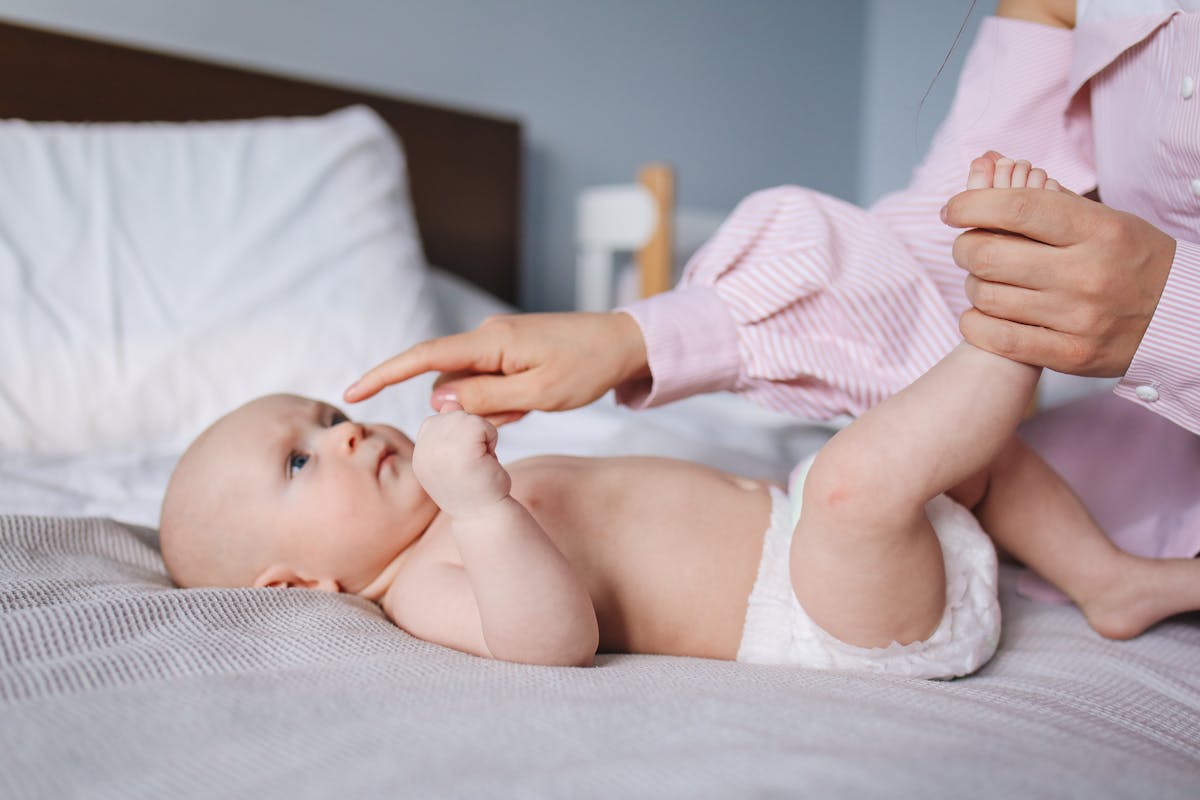This most commonly occurs in children, and is diaper allergy, however this disease may also arise among adults and seniors who also use diapers because of illness or medical conditions.
To help you with your baby’s daily care and prevent diaper rash or allergies, we have a series of tips that you can use without any inconvenience. Check it out!
First signs of allergy
Diaper allergies are very annoying, especially because children are unlikely to recognize the initial symptoms. Therefore, extra care and cleaning should be taken to identify any signs of allergy.
One of the most common allergy symptoms is what is called diaper rash , also known as diaper rash or burn. Its main characteristic is an inflammatory reaction of the skin that is in direct contact with the diaper fabric, particularly the inner thighs, genitals and buttocks.
During an episode of diaper allergy, the affected area of skin becomes slightly red. When the reaction is milder, you may notice a little itching, which usually goes away after a few days of proper treatment.
In more severe allergic reactions, this part of the body may become hot and very irritated, similar to a burn. It is also possible to notice itching and peeling of the skin, which causes pain and affects the sleep and comfort of the baby or adult. In more serious cases, it is recommended to seek a specialist doctor to avoid further injuries and to start treatment as soon as possible.
The main causes of diaper allergies
Many have diaper allergy, and such allergies normally occur when an individual gets irritated with being in long contact with urine and stools. The change of pH among the skin usually occurs whenever the individual comes into extra moisture brought by the urine or whenever contact has bacteria, in which the body will automatically have red irritation.
A possible cause for diaper allergy could be a fungal infection or allergy to plastic and other materials used during the manufacture of the diaper itself. Changing the product or checking its composition can help avoid such a situation.
Furthermore, using a diaper that is smaller than the recommended size for your baby can be too tight, causing friction with the skin and even greater discomfort. Therefore, always check the diaper measurements and make sure it is not too tight.
How to avoid this type of allergic reaction
The main ways to avoid diaper rash in babies is to take some precautionary measures, such as cleaning and using appropriate products. Check out these tips:
- avoid leaving the diaper with urine or feces in contact with the skin for many hours;
- always keep your skin dry and clean;
- leave the diaper at the ideal size, without being tight, avoiding friction and possible discomfort;
- for cleaning, preferably use neutral, hypoallergenic products and natural fabric materials;
Follow these steps, and you will be able to give your baby’s skin that waterproof barrier that protects and nourishes it at the same time. If a baby develops an allergy, do not hesitate to apply specific ointments against allergies.
Hypoallergenic diapers
A good alternative to avoid diaper allergies is choosing the hypoallergenic option. This type of diaper, aside from preventing irritation and leaks, helps take care of your baby’s skin.
This is best suited for extended use and in people who have incontinence, limited mobility, or those who are easily prone to allergies. Anti-allergy diapers prevents diaper rash and gives greater peace of mind.
This hypoallergenic product is usually free from reaction-causing chemicals, closer to the human pH, and does not possess toxic materials. This also reduces the hazard of absorption.
Learning to treat diaper allergy symptoms
The important thing is to act quickly in case of diaper rash or allergies, moisturize skin, and use appropriate products. You can even wash the affected area with warm water and mild soap and change more frequently, for instance, every three or four hours.
The ointment to be used will depend on the severity of irritation and the type of infection-maybe an antifungal or antibiotic. So, make the right diagnosis and follow the recommendations of the expert doctor for treatment.
For each life stage of your baby, there is an average number of diapers to use, but forget this is not a rule! The general rule is to change diapers five to six times a day. Of course, that all depends on a variety of things, like the baby’s age, as well as the diaper used. For instance, a newborn baby will very often go through about eight diapers a day. One-year-old and older will likely require four or five.
